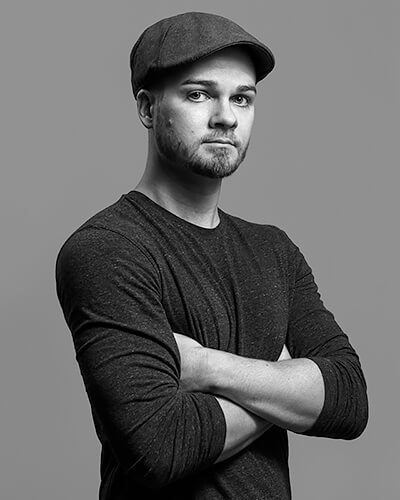Johnny Kerr is a fine art photographer based in the West Valley of Arizona’s Phoenix Metropolitan Area. Johnny is self-taught in the craft of photography but entered into his study of the medium with many years of art education and design experience. In 2003 he earned a Bachelor’s degree in Media Arts from the Art Institute of Phoenix and went on to make his living as a graphic designer.
Johnny began learning and experimenting with photography in 2011 and in 2013 decided to shift his focus, pursuing photography as his primary medium of expression. He cites his graphic design experience, along with his appreciation for minimalist design, as having the largest influence on his vision as a fine art photographer.
After deciding to change careers Johnny went back to school, earning his Master of Arts in Education degree in 2010. Johnny currently makes his living as a photography teacher in the greater Phoenix area, where he lives with his wife and daughter.
STATEMENT
Growing up in Arizona has certainly given me an appreciation for the unique beauty of the desert. However, I have never found my desert surroundings to be particularly inspiring in my artistic endeavors.
Lacking the inspiration to capture my natural surroundings in a representational manner, I have found freedom and gratification in abstraction. I found architecture to be an inspiring subject matter for its graphic qualities, but my photographs are not really about the buildings. Each photograph is a study of the rudimentary elements that catch my attention: shape, space, volume, line, rhythm, etc.
Drawing heavily from my graphic design experience, each architecture photograph represents an exercise in isolating those basic elements and trying to present them in a harmonious design. Often I have incorporated long exposure techniques to create images that seem to exist outside of the reality our eyes perceive on a daily basis. My goal has not been to abstract the subject beyond recognition, but to simplify, to pull it out of its usual context, and try to see the ordinary surroundings of city life in a new way.
The lessons I learned from my exercises in abstracting architecture have also carried through into other subject matter, including landscape and seascape, helping me to find solace and inspiration in unexpected places.
